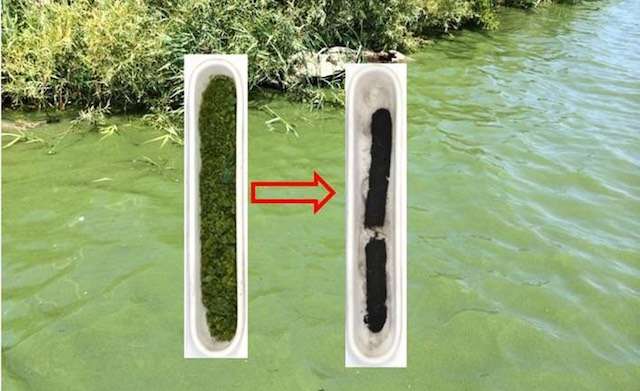College Student's Device Can Turn Polluted Air into Printer Ink
This device doesn't just suck soot out of the air-it repurposes the stuff as printer toner.

Alga blooms may have earned a bad reputation underwater, but above ground, they could rise to power in a very noble way.
Below the surface, these swarms of algae cut off oxygen in the water, threatening wildlife, livestock, and humans by making the water too toxic to drink or use for anything else.
But one group of scientists has taken an environmental threat and turned it into a green solution for supplying energy.
"We call it a ‘trash-to-treasure' approach," lead researcher Dr. Da Deng told Phys.org.
Below the surface, these swarms of algae cut off oxygen in the water, threatening wildlife, livestock, and humans by making the water too toxic to drink or use for anything else.
But one group of scientists has taken an environmental threat and turned it into a green solution for supplying energy.
"We call it a ‘trash-to-treasure' approach," lead researcher Dr. Da Deng told Phys.org.
Scientists at Wayne State University in Detroit, Michigan harvested some harmful algal blooms (HABs) and heated them up to 1800 degrees Fahrenheit in argon gas.
They ended up with something they called "hard carbon," which can be used as low cost, high-efficiency electrodes for sodium-ion batteries.
In short, they have turned these harmful organisms into electrodes for a future generation of high performance batteries, the likely replacement for the lithium-ion types currently used in devices like computers and smartphones.
SEE Also: Teenage Girl Turns Plastic Trash Into Million-Dollar Biofuel
Hard carbon is usually made from petroleum, but the process the Wayne State team found shows it can be created from HABs without a lot of the complex purification process needed for oil based electrodes.
Unlike petroleum, HABs could be farmed - grown in labs or factories to supply a renewable supply of material.
How a Smartphone Case Charges Batteries Out of Thin Air
The researchers are now working on improving the efficiency and reliability of their electrodes to make the approach marketable while looking at ways of harvesting HABs.
These findings have been published in the journal Environmental Science and Technology.
- Photo: Da Deng, Wayne State University
Be the first to comment